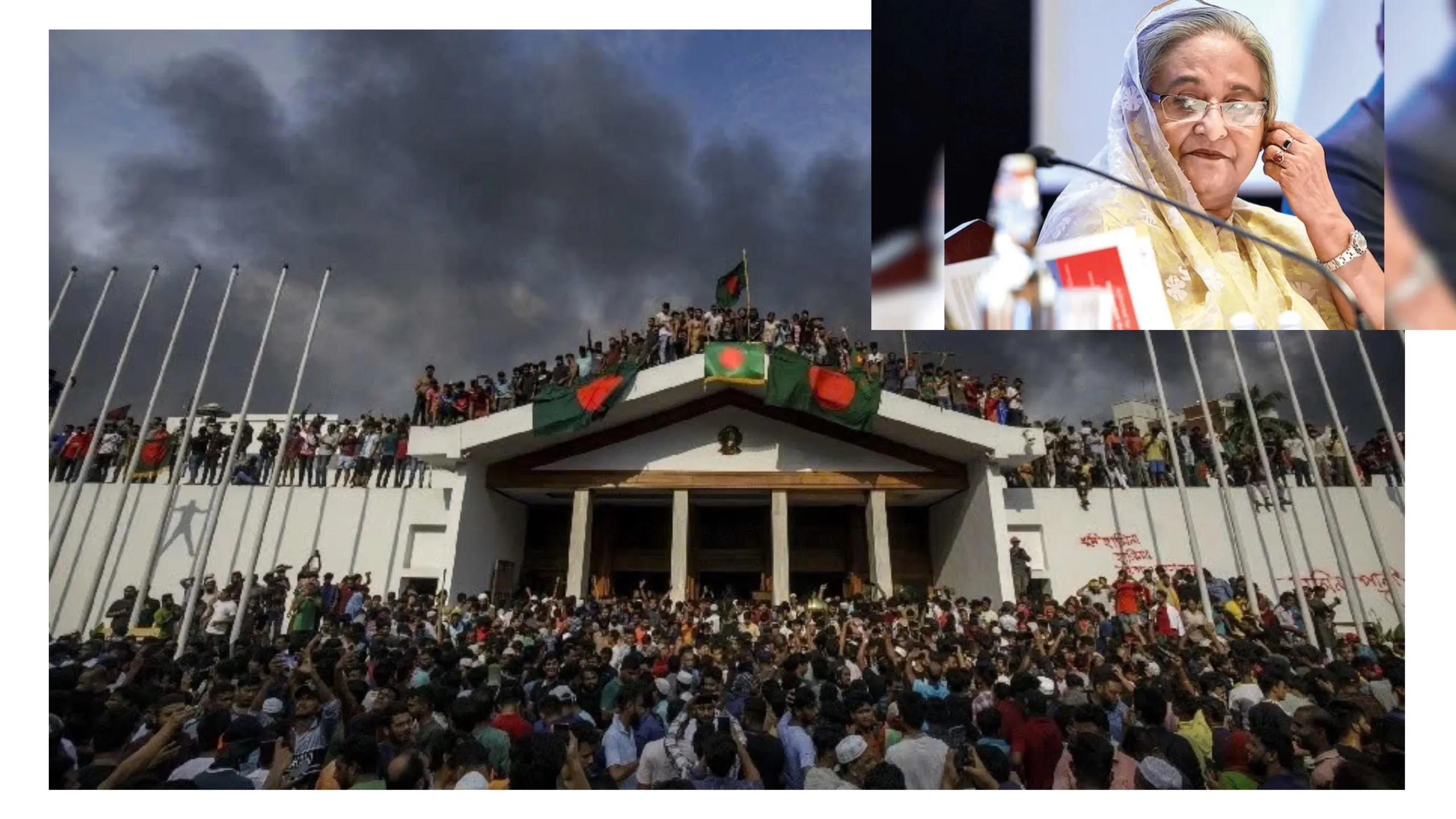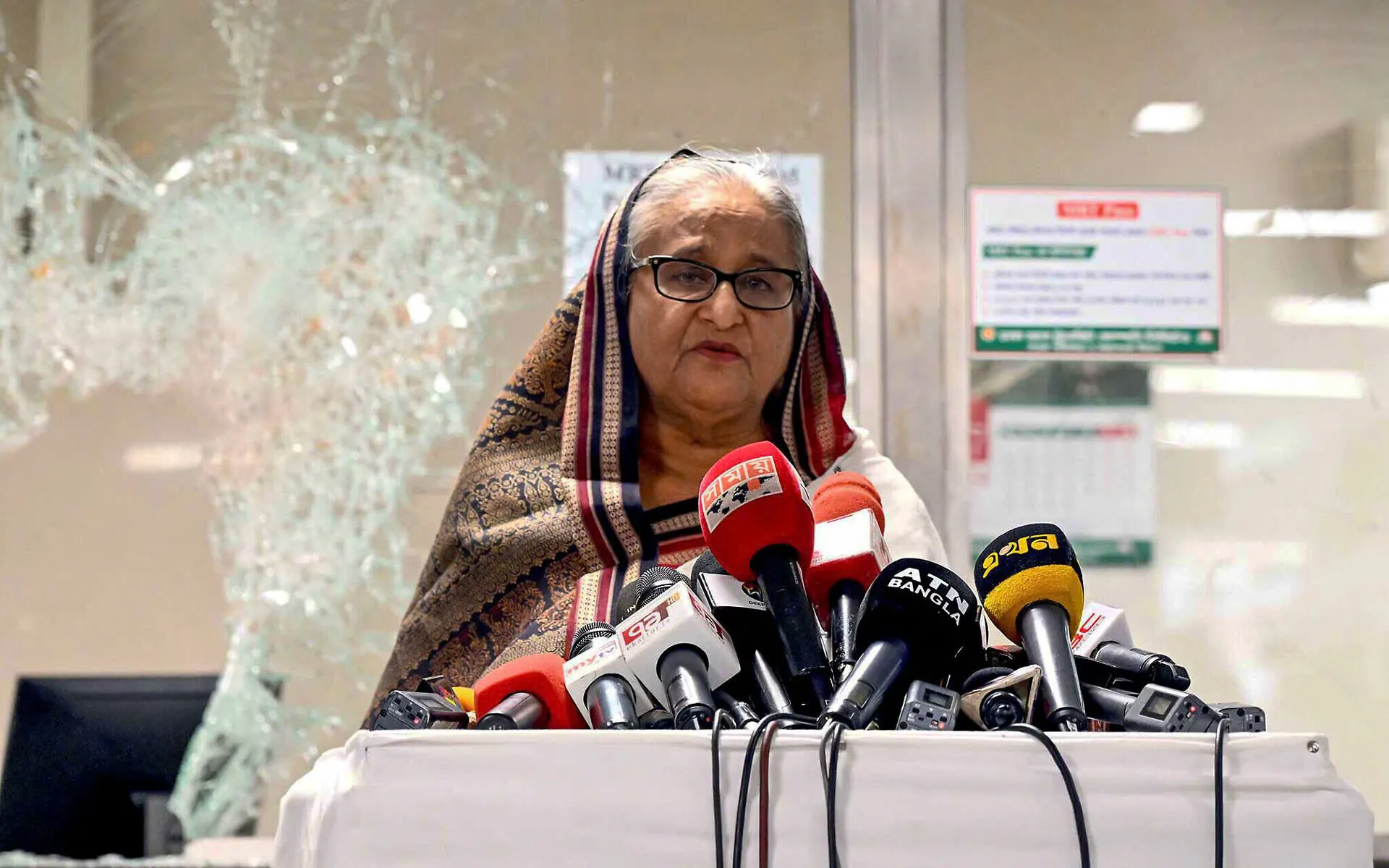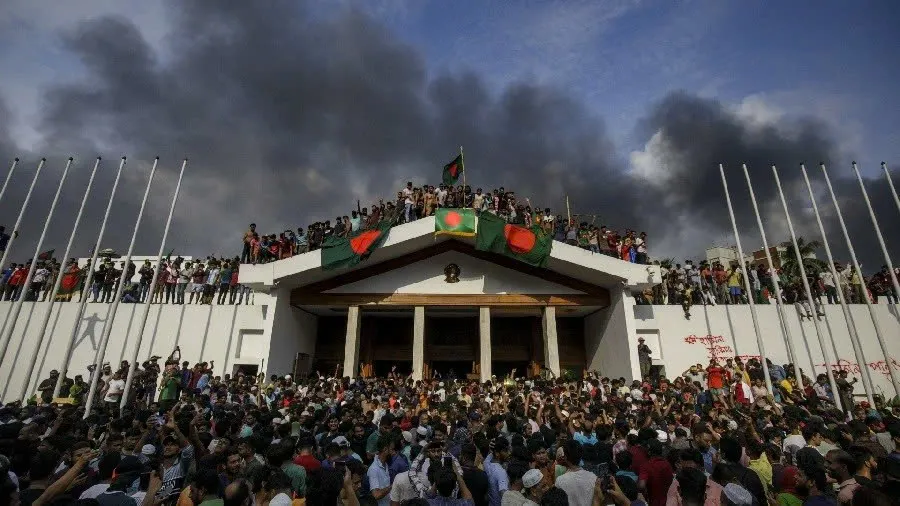
The resignation of Sheikh Hasina, daughter of Bangladesh’s founding father, and her hasty flight to India after 15 years as prime minister has sent shockwaves through the country, plunging Bangladesh, a South Asian nation of 174 million people, into increasingly severe instability.

It marks not only the end of a turbulent period of leadership, but also a clear sign of political and social turmoil in a country grappling with far-reaching challenges. As the political storm rages, the big question is what will become of Bangladesh as its long-serving leaders flee and the country plunges into unprecedented crisis?
Protests began in Bangladesh in July after the country’s Supreme Court restored a quota system reserving up to 30% of government jobs for relatives of veterans who fought in the country’s 1971 war for independence from Pakistan.
The “privilege” quota system was established by then Prime Minister Sheikh Mujibur Rahman, father of Sheikh Hasina, as a policy to honor those who had contributed to the country’s liberation.
However, after more than 50 years, the descendants of former freedom fighters account for only about 0.12% to 0.2% of the 174 million population while 18 million young people are unemployed. Therefore, the policy of Prime Minister Hasina’s government to maintain the quota was the “last straw”, causing long-simmering discontent in society, especially among young people, to erupt into widespread violence.
The “Civil Service Quotas” crisis bears many similarities to the “Arab Spring” revolution 14 years ago in a series of Arab Muslim countries in the Middle East and North Africa. Protesters have condemned the government for using excessive force against peaceful protesters.

Violent protests in Bangladesh. (Source: Tageschou)
According to Reuters, at least 300 people have been killed in violent protests that have lasted since early July, sparking a wave of anger and anxiety in the international community. Meanwhile, the government of Prime Minister Sheikh Hasina has denied the accusations, asserting that the perpetrators of the violence were not students but terrorist groups deliberately inciting unrest.
This statement not only did not ease the situation, but also increased the discontent among students, who felt they were being treated unfairly in this serious political crisis. Tensions are rising, and the crisis in Bangladesh is gradually becoming a difficult problem for both the government and society to solve.
In the face of escalating violence, the Bangladeshi government imposed a nationwide curfew from 6 p.m. on August 4. On August 5, the country’s army chief, General Waker-Us-Zaman, announced on television that an interim government would be formed. That same evening, President Mohammed Shahabuddin agreed to form an interim government and met with the heads of the Army, Navy, Air Force, political party leaders, and members of Bangladesh’s civil society groups to discuss ways to stabilize the situation.

Bangladeshi protesters celebrate their victory. They, mostly students, took to the streets to protest against government policies after being called “Razakar” by Ms Hasina. Photo: Reuters
On August 6, under increasing pressure from protesters, President Mohammed Shahabuddin announced the dissolution of Parliament and decided to release former Prime Minister Khaleda Zia and other political prisoners who had been arrested during previous protests. This decision was intended to cool down the tense situation, but was not enough to calm the simmering discontent in society. On August 7, Dr. Muhammad Yunus, the 2006 Nobel Peace Prize winner for his work in lifting millions of rural Bangladeshis out of poverty through microloans, was unanimously elected by political factions as the head of the interim government. This is an effort to temporarily calm the unrest and open a new chapter in the effort to restore peace and stability to Bangladesh.



